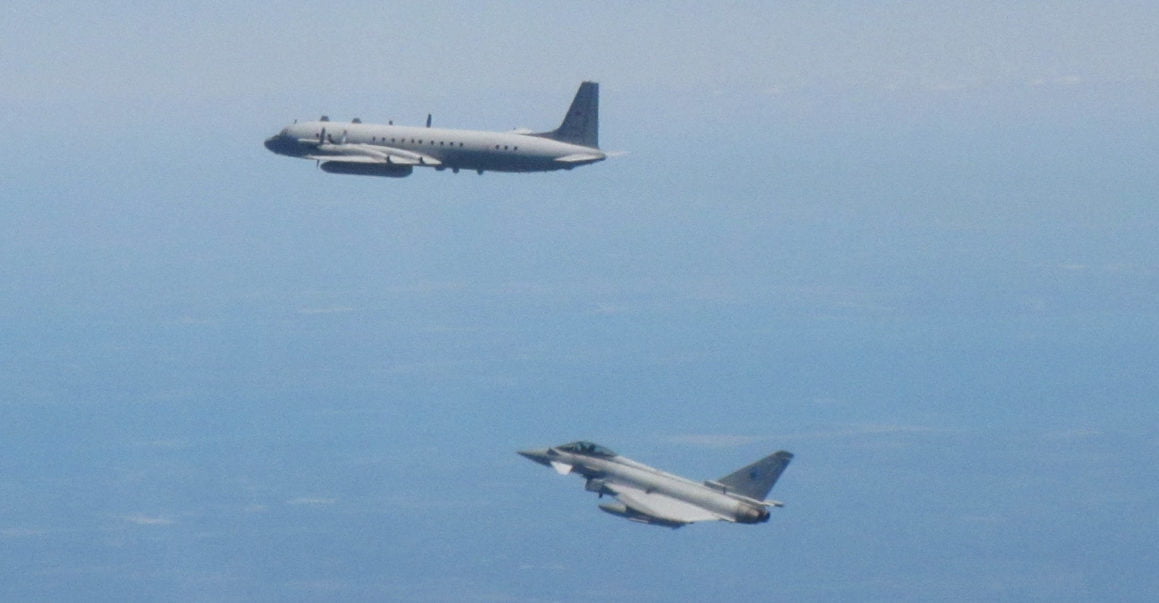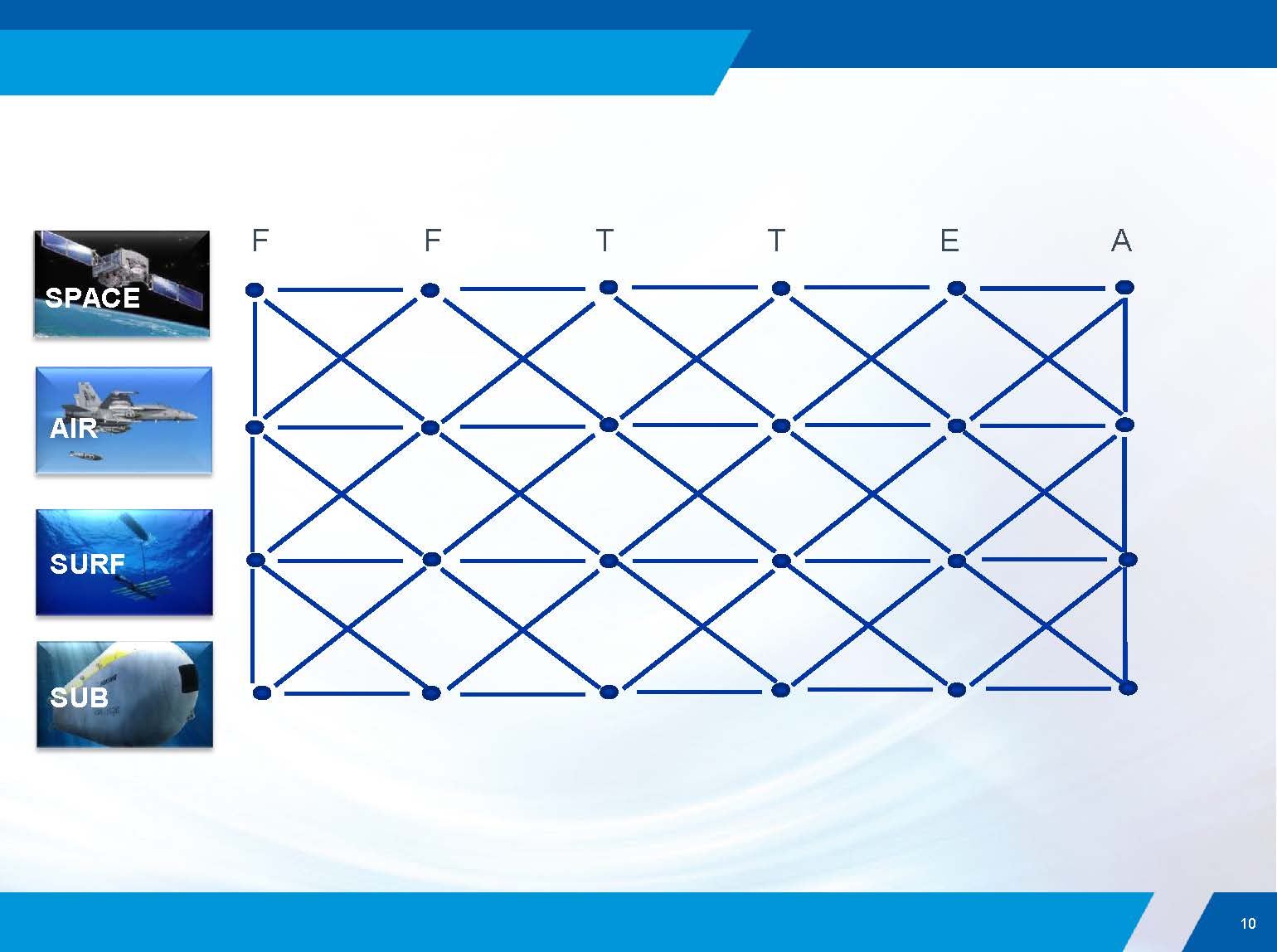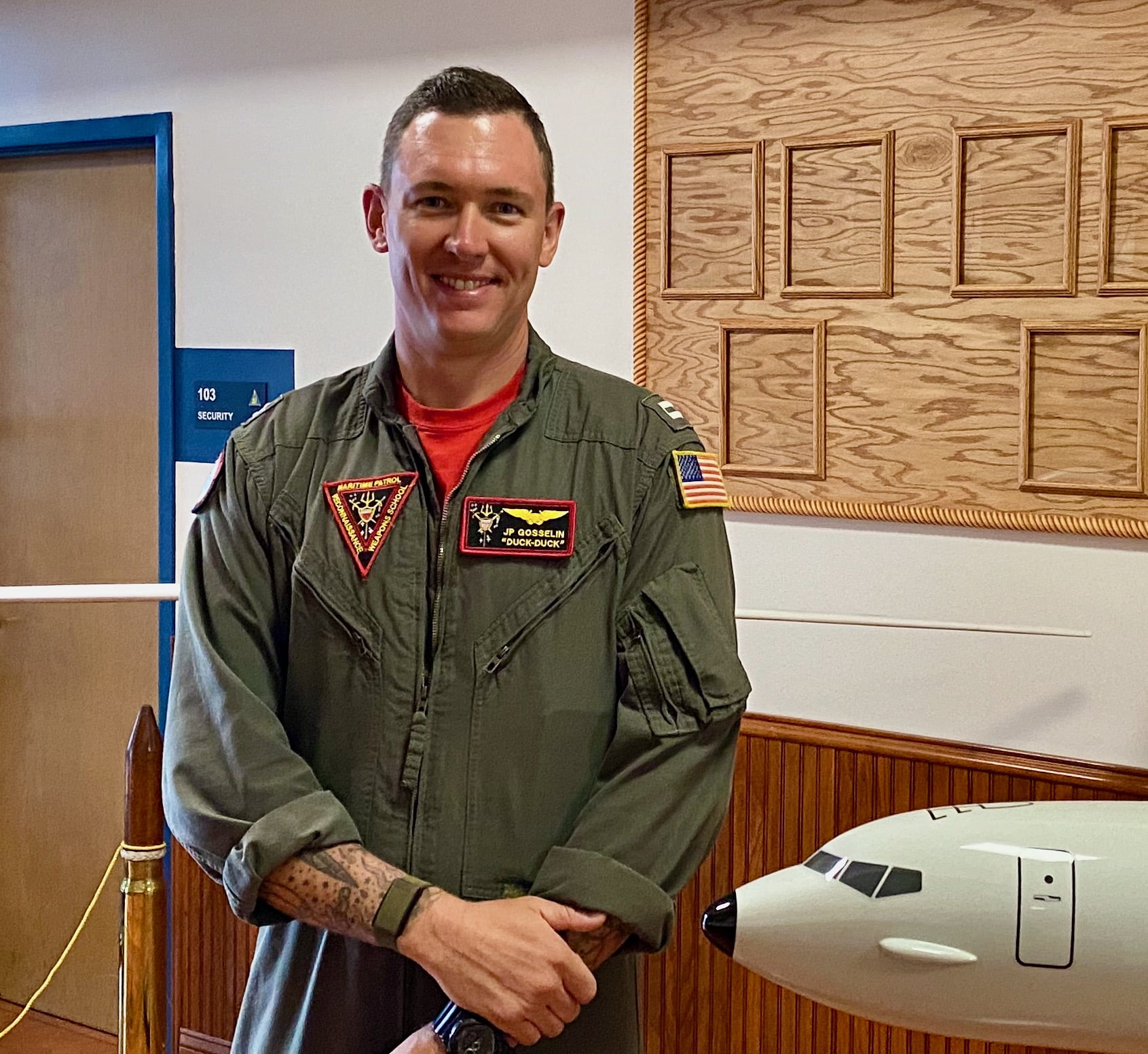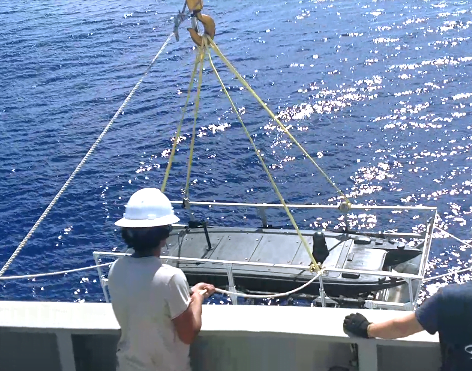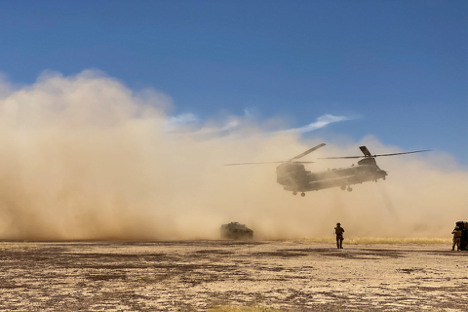By George Galorisi
Over 2,500 years ago, Sun Tzu noted, “The line between disorder and order lies in logistics.” While logistics may not stir a great deal of passion among Navy and Marine Corps warfighters, one doesn’t need to be a historian to understand the importance of logistics to warfare over many millennia. From Alexander the Great, who noted, “My logisticians are a humorless lot…they know if my campaign fails, they are the first ones I will slay,” to Captain Alfred Thayer Mahan, who said, “Logistics are as vital to military success as daily food is to daily work,” to Lieutenant General Fredrick Franks, USA, 7th Corps Commander during Desert Storm, who noted, “Forget logistics, you lose,” to many others, successful military leaders know the value of logistics.
Some years ago, General Robert Barrow, then-Commandant of the U.S. Marine Corps, coined a phrase that is still a staple of U.S. War College curricula, “Amateurs talk about tactics, but professionals study logistics.” More recently, at the 2019 USNI/AFCEA “West” symposium, Brigadier General Arthur Pasagian, USMC, Commander, Marine Corps Systems Command, noted, “Logistics is a key enabler for all we do.”
Armed with the experience of two-decades of war in Iraq and Afghanistan, the U.S. military is focusing more intently on logistics than it has in some time. This includes maritime logistics, a subject that has been addressed in a number of recent articles in professional journals. Here is how one active duty naval officer, Lieutenant Commander Collin Fox, put it in the pages of the U.S. Naval Institute Proceedings earlier this year:
The great diversity of challenges that threaten the U.S. Navy in the near term – spanning all domains and all levels of warfare – has led to an unequal concentration of effort, leaving some areas unaddressed. Maritime logistics ranks chief among them…Great maritime powers have always sought the capacity to interdict their enemies “vital lines of communication” while protecting their own. Fleet Admiral Ernest King’s strategic retrospective still applies: “It is no easy matter in a global war to have the right materials in the right place at the right time in the right quantities.”
Second Line of Defense has featured a number of articles focused on logistics and the supply chain. The majority of these have focused on “big picture” logistics issues, for example, Robbin Laird’s, “The US Logistics Systems: The Challenge of a Strategic Reset.” SLD has also featured articles about expeditionary operations, especially those conducted by the U.S. Navy-Marine Corps team, such as, “Presence, Economy of Force and Scalability: The New Amphibious Task Force.”
Moving from the macro to the micro, from the strategic to the operational and even tactical, it is no accident that many of the logistics-focused quotes above come from Marine Corps officers. Amphibious operations represent perhaps the one area where logistics cannot fail. Once Marines are on the beach, if their logistics breaks down, they have few options to continue the fight, and might even have to withdraw.
The Challenge of Amphibious Logistics
Last year, two RUSI research fellows, Dr. Sidharth Kaushal and Dr. Jack Watling, published an insightful article in RUSI Defence. Their overarching thesis was captured in the title of their piece, “Amphibious Assault Is Over,” and amplified in the article’s subtitle: “The conduct of amphibious operations is currently undergoing a drastic overhaul in response to an array of emerging threats.” Two phrases in their piece caught my eye: “The prospect of assaulting a hostile shore today is more daunting than ever,” and “The capacity of Marines to push inland must depend on the security of their logistical support.”
While Drs. Kaushal and Watling surfaced many valid concerns regarding the efficacy of conducting opposed amphibious assaults in the face of, “sophisticated anti-access/area denial (A2AD) capabilities that threaten our strategic reach and operational freedom of maneuver,” their thesis was not that amphibious assault operations are dead, but that we must design platforms, systems, sensors and weapons that help ensure that the assaulting forces can successfully conduct their challenging mission.
The Navy-Marine Corps team has been proactive in pushing the edge of the envelope in leveraging new technologies to make the nation’s expeditionary assault force more distributed, lethal, survivable and sustainable. Many of these technologies have aided high-end and highly visible missions, but others have looked at missions conducted by the Navy-Marine Corps team that are typically “below the radar.” Given the importance of logistics to the success of any amphibious assault, the sustainability function is one that is ripe for new technology insertion.
To be clear, the U.S. Navy and Marine Corps don’t have a monopoly on leveraging new technology to support the logistics function. The U.S. Army – having suffered significant human loses in fuel convoys in the Middle East conflicts – is leading the way in this area, experimenting with unmanned fuel trucks to perform this vital logistics task.
Enhancing Expeditionary Logistics with Emerging Technology
Navy-Marine Corps exercises such as a series of Advanced Naval Technology Exercise (ANTX) events and the annual Bold Alligator series have looked at a wide-range of emerging technologies that can make expeditionary assault forces more lethal, agile and survivable. Other events have examined different missions conducted by the Navy-Marine Corps team, specifically the logistics and sustainment function.
One doesn’t need to be a Clausewitz or Sun Tzu to understand the importance of logistics to warfare over many millennia. For the Navy-Marine Corps team, this plays out most prominently during an amphibious assault. The INDOPACOM Joint Exercise Valiant Shield exercise, overseen by Commander Marine Forces Pacific (MARFORPAC) and conducted on the Marianas Island Range Complex as well as the island of Guam, experimented with using emerging technology to provide sustainment to Marines on the beachhead during this critical juncture of an amphibious assault.
Marines in the fight use enormous quantities of fuel, food, ammunition and other material as they attempt to move off the beachhead. While many functions are important in an amphibious operation, once the assault is underway and Marines are on the beach, sustainment is crucial in ensuring their success. The mission will ultimately fail if the Marines are not able to have reliable and continuous sustainment.
Using manned naval craft for this sustainment mission puts operators at unnecessary risk of enemy fire, as well from near-shore obstacles that were not cleared prior to the assault phase. Using scarce manned craft to perform this mission also takes them away from more necessary roles. That is why this major Navy-Marine Corps amphibious exercise evaluated the ability of unmanned surface vehicles to conduct this sustainment mission.
MARFORPAC used USVs during Valiant Shield 2018 to resupply the landing force. The exercise coordinator used a catamaran hull, 12-foot MANTAS USV to provide rapid ship-to-shore logistics sustainment. While this small, autonomously operated, USV carried only one hundred and twenty pounds of cargo, the proof-of-concept worked and demonstrated that unmanned surface vehicles could effectively resupply troops ashore.
Using unmanned vehicles for the sustainment mission can be a game-changer for expeditionary assault forces. Beyond taking operators out of harm’s way, using USVs in this role frees manned craft for other missions. Additionally, having a continuous, preprogrammed, logistics resupply process to perform one of the dull, dirty and dangerous functions important in an amphibious assault means that there is one less thing for the commander to have to manage during these operations.
This proof-of-concept with a 12-foot MANTAS USV achieved positive results. That said, resupply in 120-pound increments is far less than is required to provide what is needed by the Marines on the beach. The Valiant Shield exercise provided the impetus and inspiration to continue to explore the use of USVs for amphibious force sustainment. Now, the Navy and Marine Corps are looking to “scale-up” small USVs and continue to experiment with using larger USVs to provide larger sustainment quantities.
“Scaling-Up” to Deliver Expeditionary Logistics
To undertake this scaling-up effort, the maker of the MANTAS family of USVs (Maritime Tactical Systems, Inc.) was asked by the Navy and Marine Corps to develop a larger proof-of-concept unmanned surface vehicle for this logistics sustainment mission using the same catamaran hull design as the smaller vessel used in Valiant Shield.
A 38-foot MANTAS unmanned surface vehicle will be demonstrated in the upcoming U.S. Navy Trident Warrior exercise. While this may not be the ultimate size for the USV the expeditionary assault force needs as a long-term solution, it will go a long way to advancing the state of the art in unmanned semi-autonomous or autonomous logistics support.
While there are a range of larger USVs that can be evaluated by the Navy and Marine Corps, the basic specifications of the 38-foot MANTAS (T38) will provide an indication of the ability of USVs to provide a steady, continuous stream of logistics support to Marines on the beach. The T38 can carry a payload up to 4,500 pounds. The vessel travels at cruise speed of 25 knots and draws just 18 inches of draft. Additionally – and importantly for an amphibious assault – the T38 has a burst speed of 80 knots. Given the speed and carrying capacity of the T38-sized USV, it is readily apparent on how it can fulfill this, and other important logistics functions.
The T38 is modular and can keep cargo dry in the turbulent surf zone. Additionally, given the fact that an adversary will endeavor to fire on unmanned craft attempting to resupply the landing force, each vessel can operate in “gator mode” where the main deck is awash and only equipment such as cameras and radar are exposed above the water surface, making each USV much harder to target.
Delivering Logistics Sustainment to Troops Ashore
As any observer can see from a hilltop near one of several U.S. Marine Corps bases, an amphibious formation typically stands no more than 15-25 nautical miles off the beach being assaulted. Using a notional stand-off distance of 20 nautical miles, an amphibious formation equipped with four T38s traveling at their cruise speed of 25 knots could deliver 18,000 pounds of material from the amphibious ships to the beach per hour, allowing the short time needed for loading and unloading the craft. Multiply that by twenty-four hours and you get a buildup of well-over 400,000 pounds of vital material per day, enough to support a substantial force of troops ashore.
During a recent Surface Navy Association (SNA) Symposium, NAVSEA’s Program Manager for Unmanned Maritime Systems (PMS-406), Captain Peter Small, explained the attributes most desired in maritime unmanned systems: (1) endurance; (2) autonomy and precision navigation; (3) command, control and communications; (4) payloads and sensors; and (5) platform integration. As the Navy continues to explore new missions – to include this vital logistics sustainment function – for unmanned surface vehicles, these qualities will help the Navy choose the optimal USVs that will provide our warfighters with a decisive edge in combat.
Beyond the current Trident Warrior exercise, the Navy and Marine Corps are planning an ambitious array of exercises in the years ahead: several ANTXs, Sea Dragon, Bold Alligator, Valiant Shield, Valiant Blitz, Large Scale Exercise 2020, and others. Based on the promising performance of small unmanned surface vessels in support of expeditionaryassault forces, the Navy and Marine Corps would be well-served to experiment further with larger USVs to perform this vital logistics sustainment mission.
In his address at the aforementioned SNA Symposium, Rear Admiral Ronald Boxall, Director, Surface Warfare (N96) called for the Navy to use unmanned systems to better distribute its capabilities. In his keynote address at that same event, Commander, Naval Surface Forces, Vice Admiral Richard Brown called for a renewed focus on experimentation. Continuing the current initiatives to experiment with USVs to rapidly and reliably resupply amphibious Marines ashore fulfills both these objectives.
Those nations and navies with significant amphibious assault forces would be well served to leverage what the U.S. Navy and Marine Corps have already demonstrated in exercises such as Valiant Shield and explore the advantages of using unmanned surface vehicles to rapidly, reliably and continuously resupply troops ashore.
Featured Photo: MANTAS USV being lowered for launch from a U.S. Navy ship. (Photo courtesy of MARTAC)
Editor’s Note: Trident Warrior 2020 is upcoming in early July.
Here is the US Navy’s summary of Trident Warrior 2019:
SAN DIEGO (NNS) — Naval Information Warfare Systems Command (NAVWAR) tested tools and techniques to rapidly equip the warfighter with advanced capabilities during Trident Warrior 2019 (TW19), which ended Sept. 19 off the coast of San Diego.
In its 17th year, Trident Warrior is an annual large-scale, at-sea field experiment where the Navy selects potential initiatives that address capability gaps and provide inventive solutions in an operational environment.
“We cannot expect victory fighting tomorrow’s conflicts with yesterday’s technologies,” said NAVWAR Commander Rear Adm. Christian Becker. “Experiments like Trident Warrior put the latest technologies into the hands of our Sailors so they can test and evaluate them for warfighting effectiveness and ultimately help us grow our advantage in the maritime domain.”
During TW19, NAVWAR joined government, military and academia to experiment with more than 16 key initiatives and concepts of operations. These initiatives focused on the rapid development and deployment of new capabilities to aid maritime forces in key domains of warfare including air, land, sea, sub-surface and cyber.
“Trident Warrior provides the recurring opportunity to work with partners across all domains and echelons in sourcing potential solutions to identified capability gaps and warfighter needs,” said Dan Hallock, Trident Warrior deputy director, Naval Information Warfare Center (NIWC) Pacific. “Trident Warrior also creatively repurposes existing technology in novel ways in order to increase our competitive advantage and effectiveness, helping accelerate the speed of technology adaption and adoption in today’s highly dynamic environment.”
During the event, participants experimented with a variety of technologies, including NIWC Pacific’s Cooperative Autonomous Systems for Standoff Maritime Inspection and Response (CASSMIR) system. CASSMIR uses unmanned surface vehicles to autonomously pilot remotely operated vehicles keeping operators out of harm’s way and away from underwater threats.
“CASSMIR helps the Navy to explore the autonomy and command and control of remotely operated vehicles,” said Anthony Jones, NIWC Pacific lead engineer. “During the experiment we were able to use an unmanned surface vehicle as an autonomous tender and command and control link to support the overall mine countermeasure mission.”
The Battlespace Awareness and Information Operations Program Office (PMW 120) conducted an Automatic Identification System (AIS) experiment to identify and examine anomalies in shipboard data for improved decision-making onboard Navy ships.
“AIS collects open-source AIS data that is broadcast from AIS transceivers on commercial shipping vessels,” explained Matthew Green, PMW 120 AIS cyber lead. “This data, combined with other intelligence and surveillance data, is used by Navy ships and submarines to improve safety of navigation and situational awareness.”
TW19 participants also experimented with NIWC Pacific’s Reverse Proxy and Network Address Translator System (RP-NATS).
RP-NATS is a government off the shelf (GOTS) ship-based software that tracks down internal irregular network behavior in a matter of minutes. Previously, this tracking could take personnel days to resolve, with some incidents never being fully tracked and adjudicated.
“NIWC Pacific engineers were able to successfully demonstrate RP-NATS as a GOTS solution that provides shore-based users with the ability to reverse look up internal asset IPs using fields such as time stamp, source and destination IP and ports,” said Henry Au, NIWC Pacific electronics engineer. “The system would directly reduce man hours and increase cyber situational awareness, using a common simple interface, resulting in big impacts for the Navy.”
Other TW19 initiatives ranged from maritime domain awareness, networks, information operations, and command, control, communications, computers, intelligence, surveillance and reconnaissance (C4ISR) technologies.
Additionally, the NAVWAR Reserve Program (NWRP) had a number of Navy reservists providing expertise to support the event. NWRP Sailors leveraged their education, technical skills and military experience to address C4ISR systems tested during TW19.
“NAVWAR Reservists provide essential operational expertise and end-user feedback to events like TW19 to ensure technologies in the early phases of the acquisition process meet the needs of each and every warfighter,” said Operations Specialist Petty Officer 1st Class Joseph Hanovich.
NAVWAR is now working to analyze the data collected during TW19 to provide recommendations for future development and deployment of the tested technologies. NAVWAR is already planning for Trident Warrior 2020, scheduled for June-August 2020 in conjunction with the bi-annual Exercise Rim of the Pacific.
NAVWAR identifies, develops, delivers and sustains information warfighting capabilities and services that enable naval, joint, coalition and other national missions operating in warfighting domains from seabed to space. NAVWAR consists of more than 11,000 active duty military and civil service professionals located around the world.



